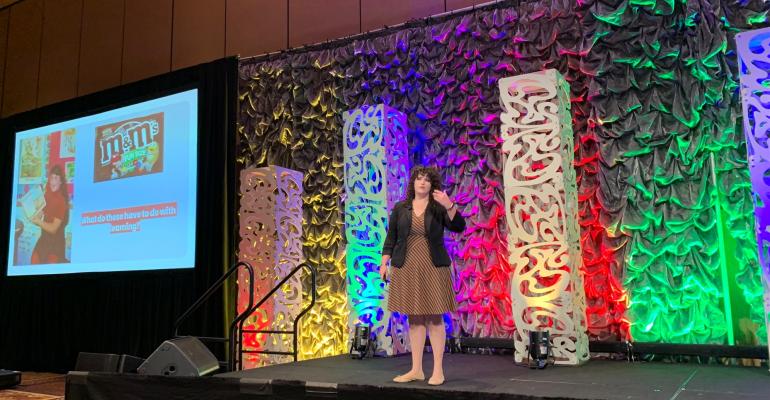The 10th edition of IMEX America kicked off in Las Vegas on October 10 with a full day of educational sessions titled “Smart Monday Powered by Meeting Professionals International.” And one of the program’s first sessions addressed a hot topic in the post-pandemic meetings environment: How do meeting hosts balance educational offerings with the networking opportunities attendees say they want so badly right now?
The answer: Make networking a central part of the educational offerings.
Jillian Cardinal, business-development director for collaborative-strategy firm Braindate, presented a three-step framework for planners to build peer-to-peer educational opportunities that deliver deeper learning while also strengthening connections between attendees.
The first step, Cardinal says, is to promote the “social learning” opportunities that will be part of the meeting. “The beauty of peer-centric learning is that you don’t have to try to develop an educational agenda that meets everybody’s needs. When enough attendees are providing their own thoughts and experiences around different topics, every attendee’s needs will be met because of the sheer number of perspectives shared by their colleagues.”
Ahead of a meeting, then, the planner could let attendees know that each session will be guided by a thought leader, but the majority of the session’s content will come from attendees. Further, attendees can choose to participate in one of four different formats during each of the peer-collaboration segments in a session: brainstorming, open discussion, storytelling, and group problem-solving, a.k.a. “help me solve.” Pre-event promotion will help attendees prepare for their active participation at the event.
Second, says Cardinal, you could allow attendees to be the “designer-in-chief” of their own learning journeys. For instance, an event might offer a complete “peer-learning track” where attendees can post discussion topics they’d like to host, or sign up to participate in other peer-suggested discussions. Hosting this process online before the in-person event helps attendees get the education they are looking for, while becoming familiar with other attendees ahead of the in-person event too. In fact, notes Cardinal, planners could encourage attendees to propose some discussion topics related to common interests that are not business-related, which could appeal to introverts or industry novices who want to network in a less intimidating atmosphere.
The third step, Cardinal says, is to make as many learning sessions as possible experiential in nature. For instance, “hands-on opportunities are ideal, but game-playing also sparks creativity and lasting mental connections,” she notes. But regardless of the means a planner uses, “learning by doing causes people to have feelings related to the experience—and feelings are very powerful for long-term retention.”






